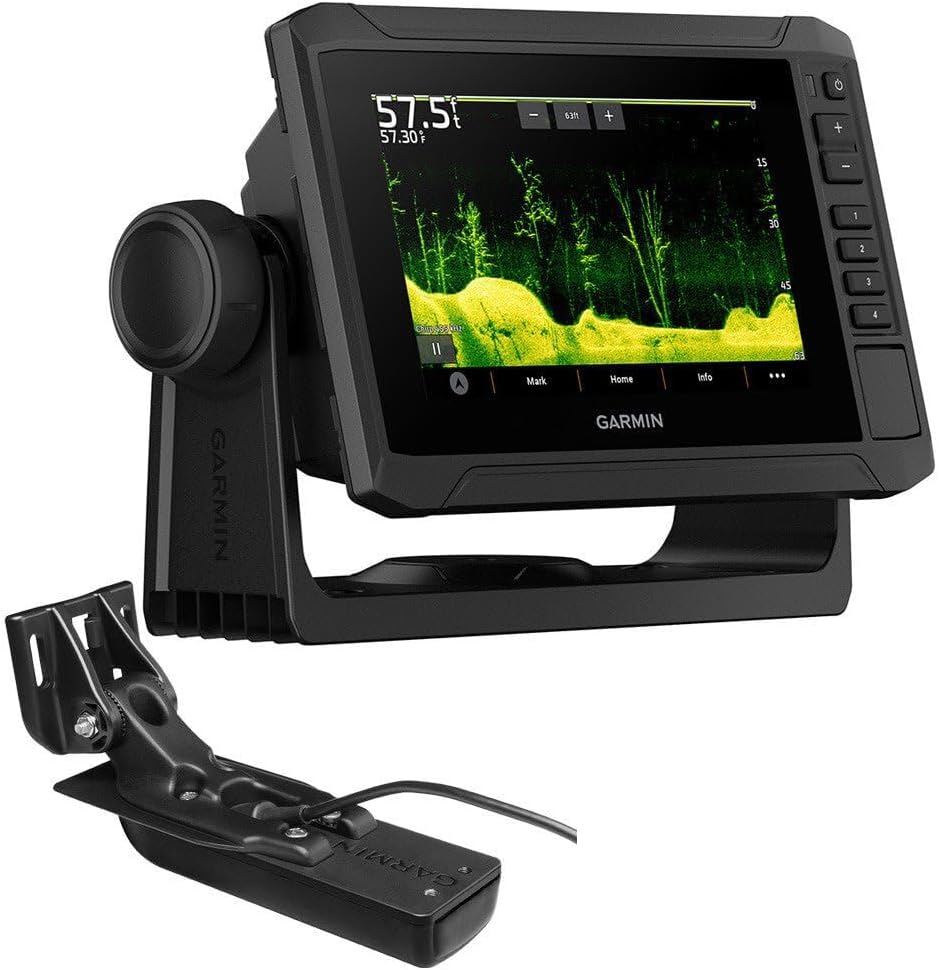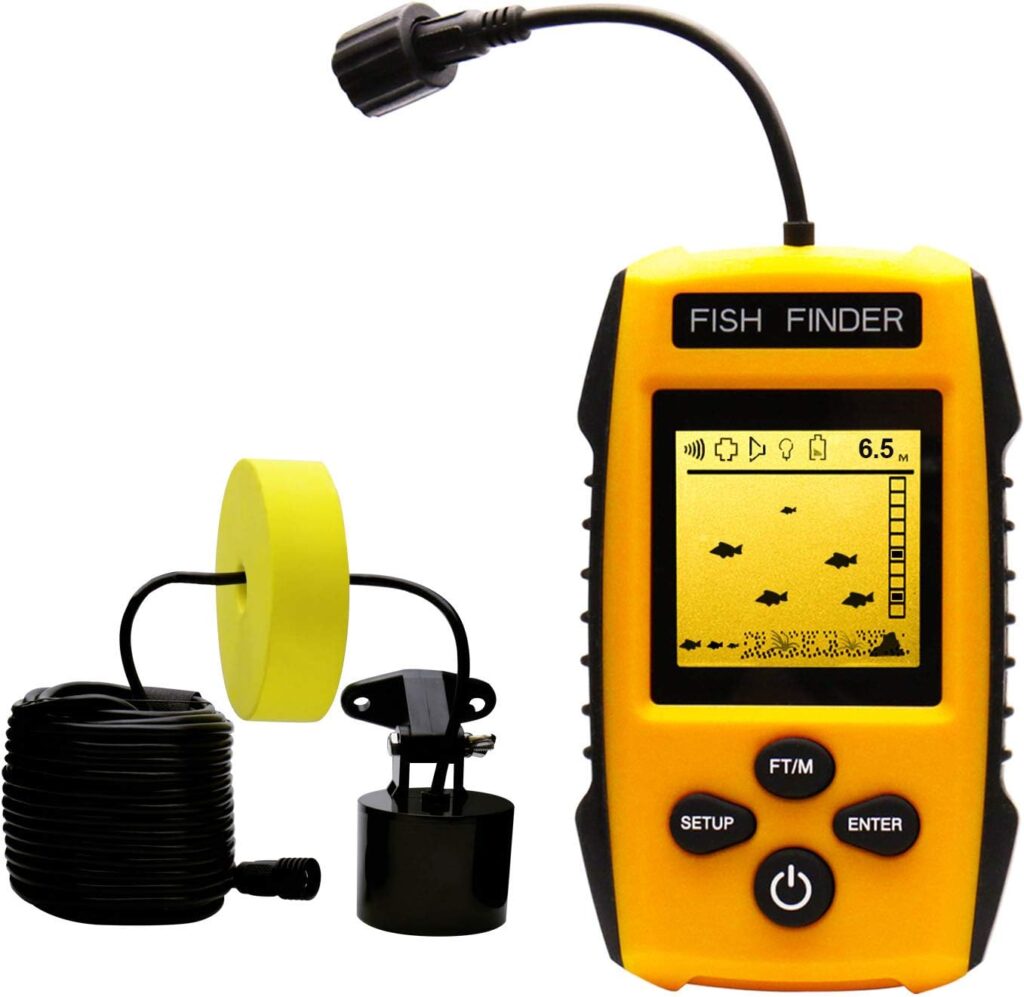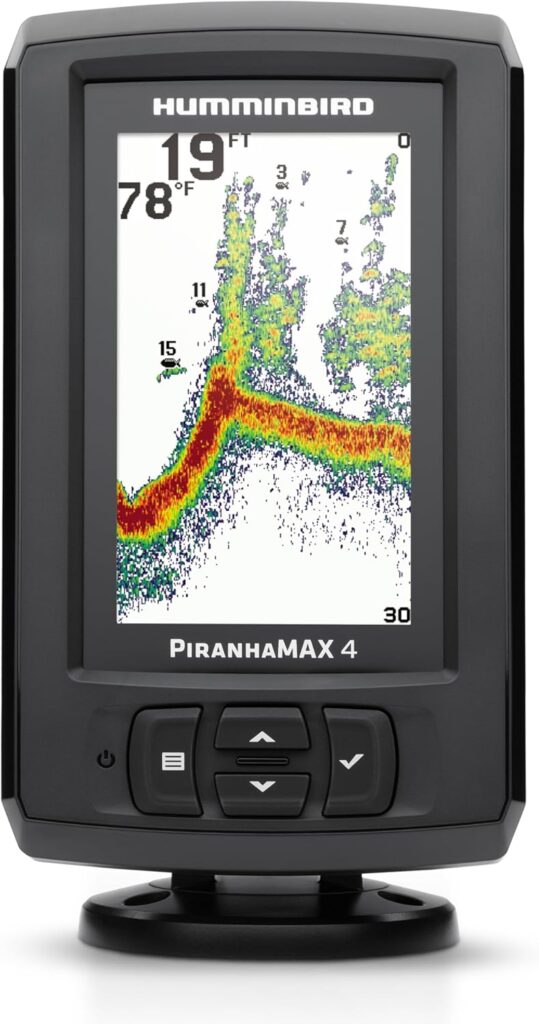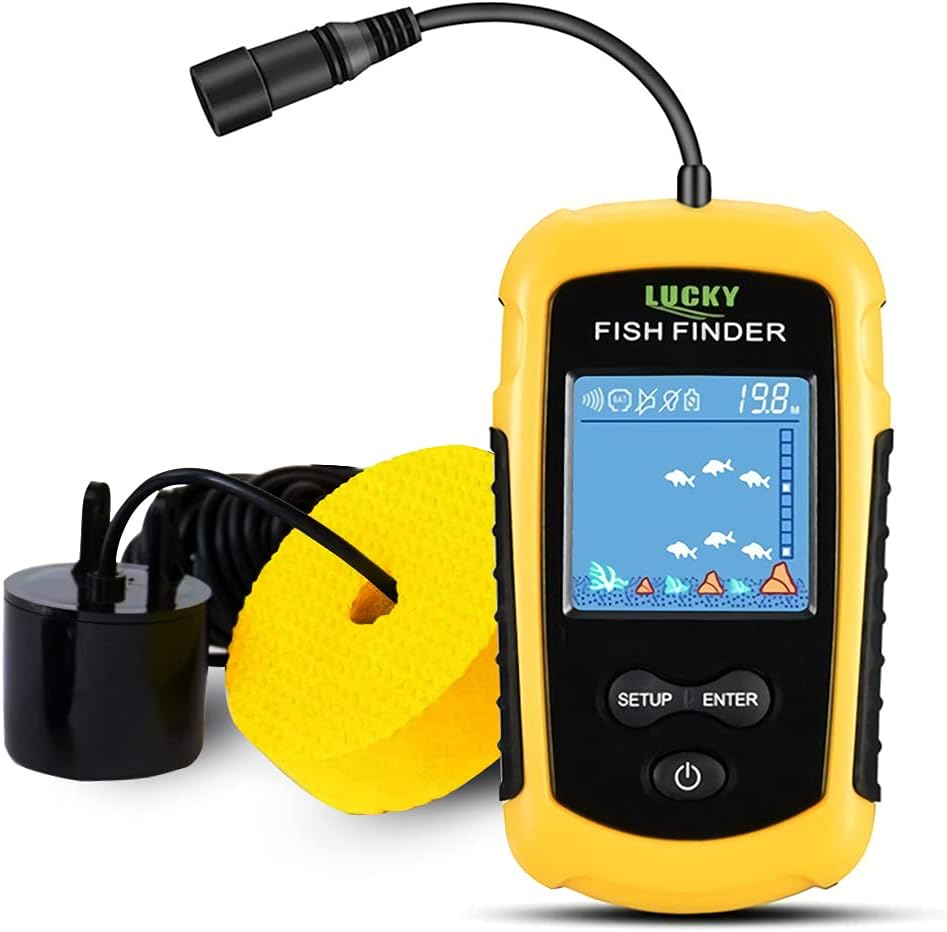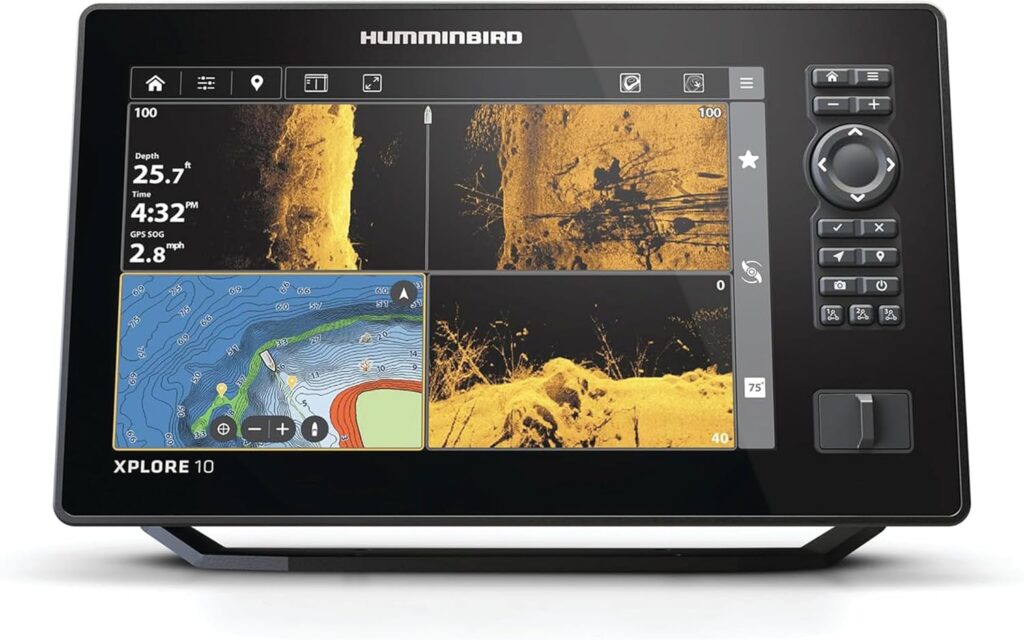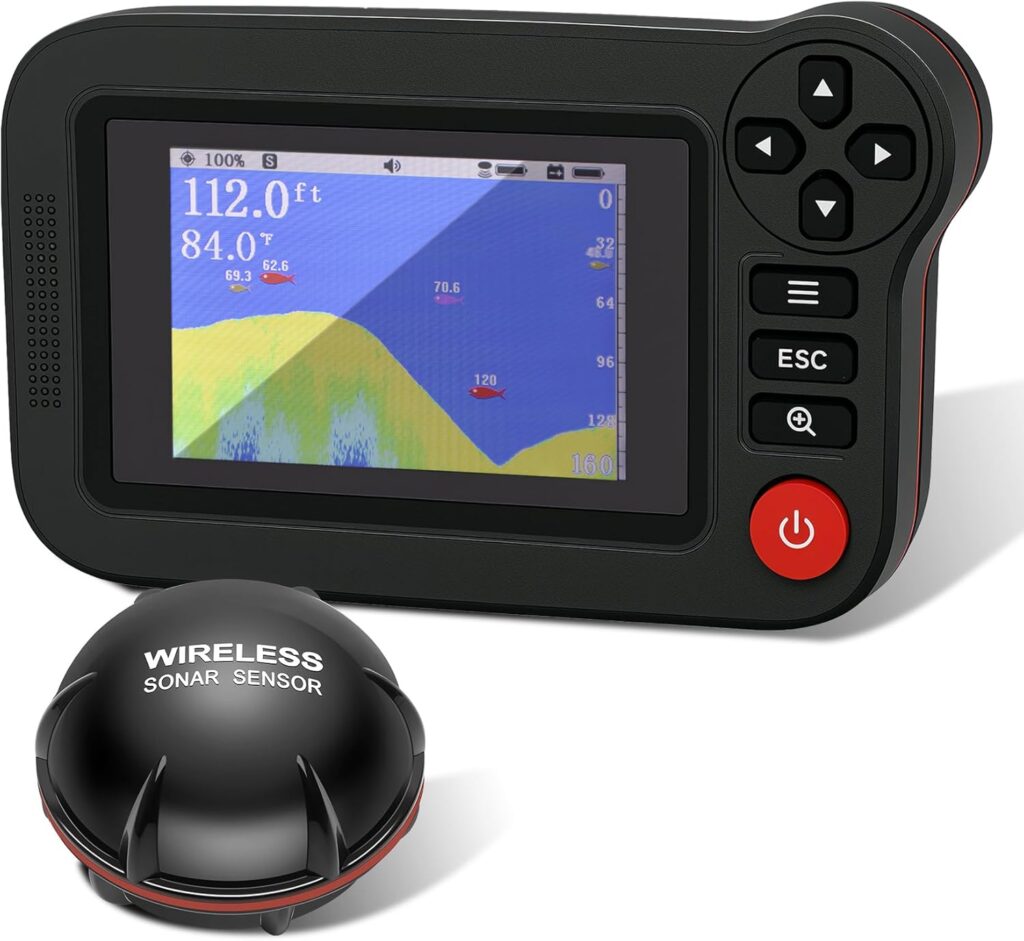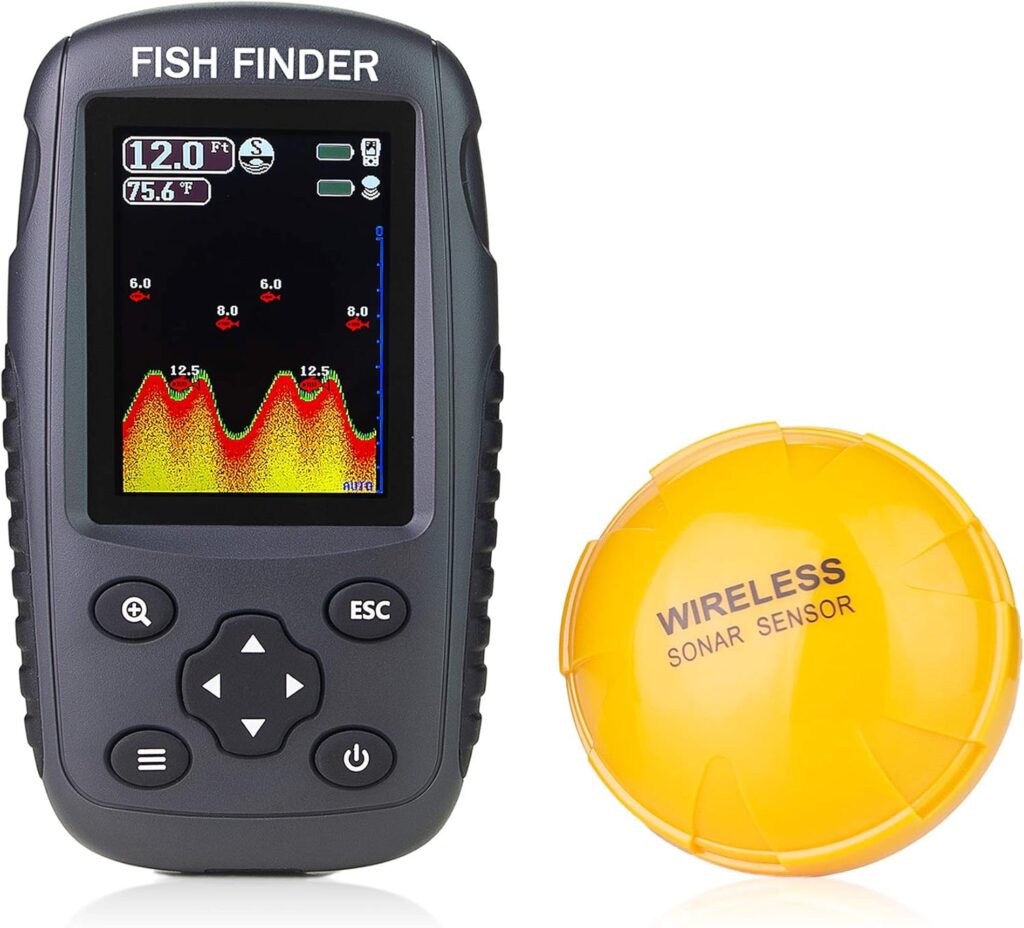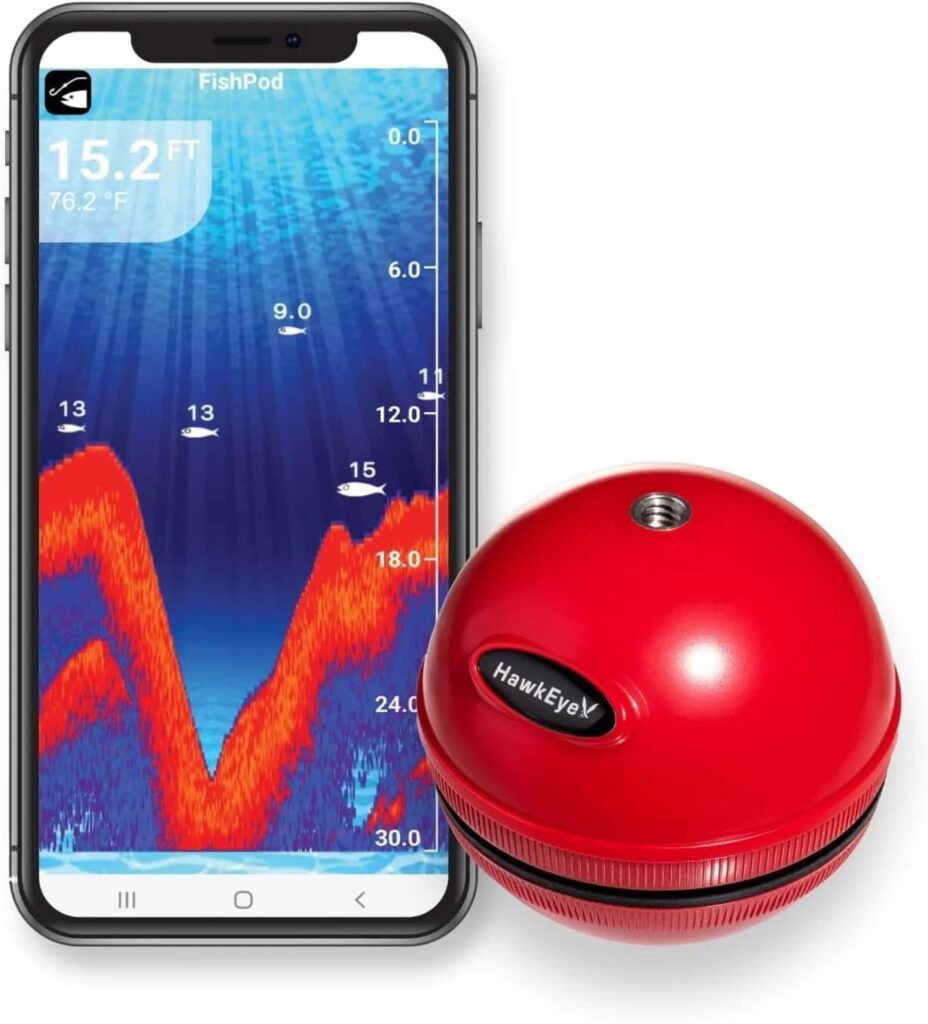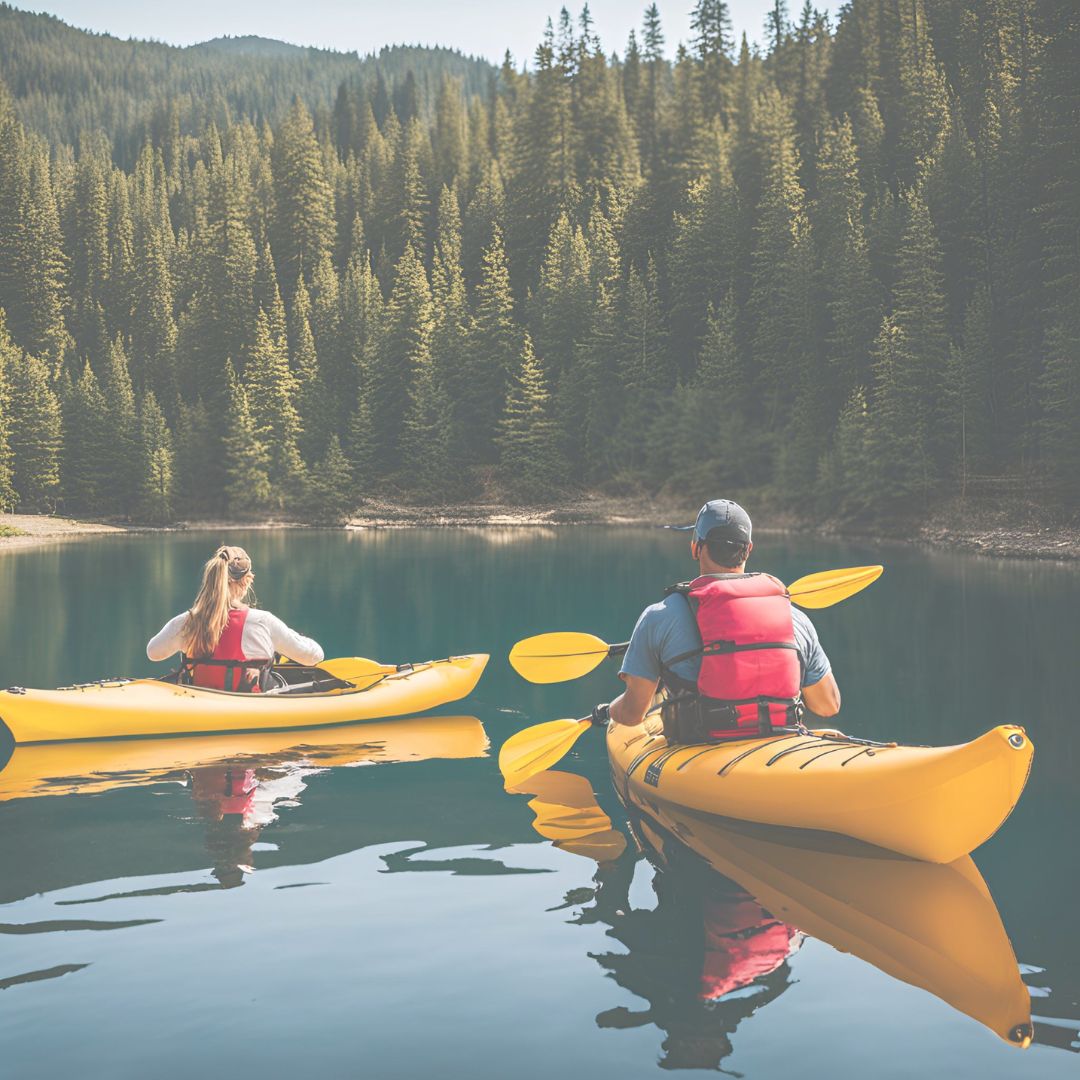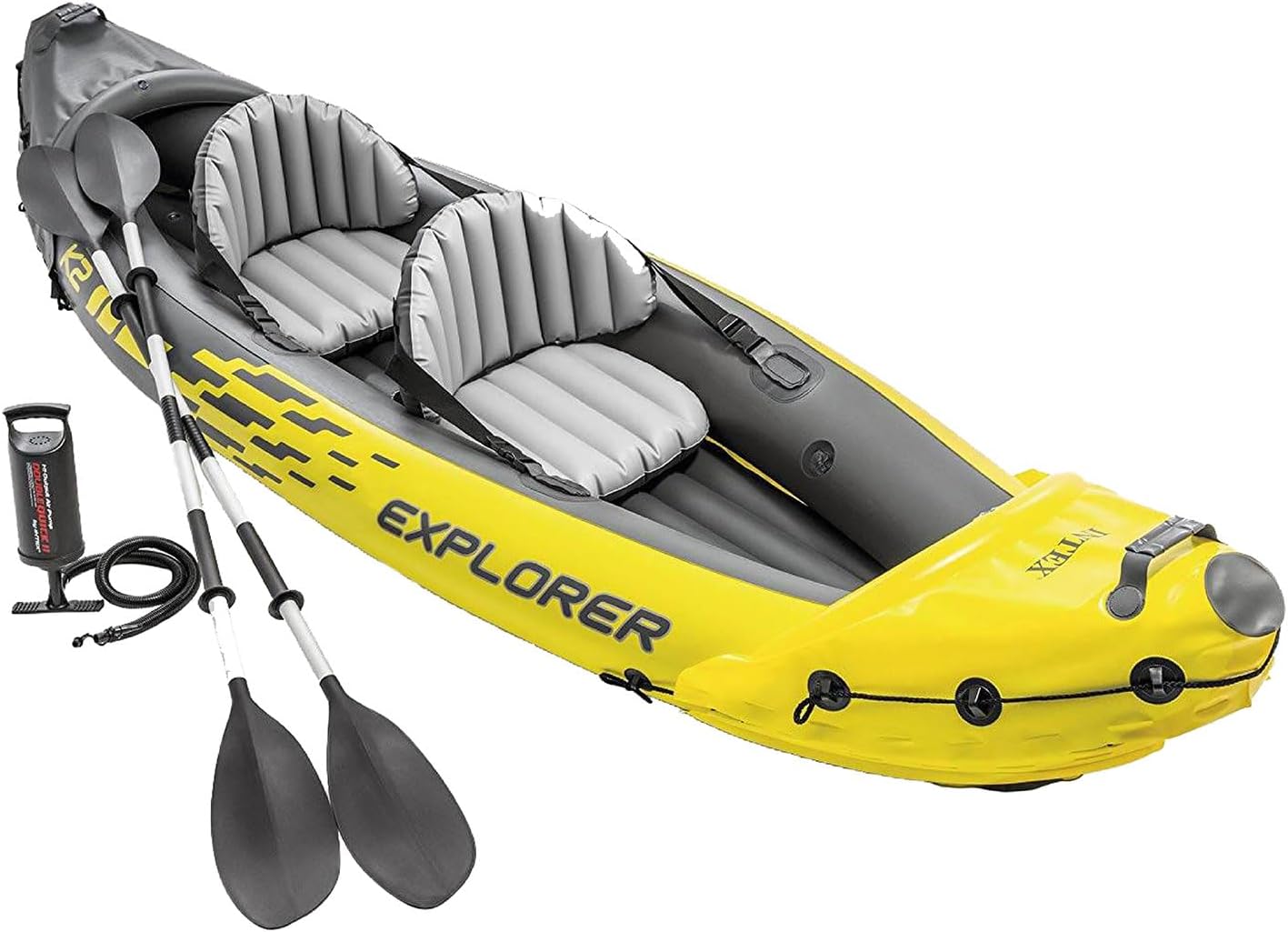10 Best Fish Finder For Kayak
Best fish finder for kayak: if your kayak had a résumé it would list “quiet, nimble, excellent at staying afloat” and not “electronics-friendly.” So, when you strap a screen and a transducer to that little hull you want a tool that finds fish, not headaches.
Best Fish Finder for Kayak
If you want the single most useful, practical pick for most paddlers who fish from a small boat or fishing kayaks, the best fish finder for kayak is a small, rugged CHIRP-capable unit or a high-quality castable CHIRP sonar depending on how you fish.
For paddlers who want minimal fuss and maximum reach from shore and tight spots go castable. For anglers who want clearer structure, GPS and mapping on the water choose a compact mountable unit with CHIRP or down/side imaging. Below are the top pick for the best fish finder for kayak.
Quick Picks — Fast, Realistic Recommendations
- Best all-around compact mountable: a CHIRP-enabled 5–7 inch unit with down imaging. Great balance of clarity, battery draw, and mapping. Many kayak anglers favor units in this range for clarity without too much weight.
- Best budget kayak fish finder: a basic CHIRP 3–5 inch unit with GPS waypointing. These units are light, inexpensive, and easy to power from a small 7–12 Ah LiFePO4 pack.
- Best castable for shore and tight spots: a CHIRP castable unit with built-in GPS mapping. Castables give you flexibility to fish from shore, docks and kayaks without drilling.
If you are still thinking, remember the core question: do you want permanence and accuracy from a mounted unit or flexibility and portability from a castable? That choice answers most follow-up questions.
10 Best Fish Finder for Kayak
Choosing the best fish finder for kayak can feel a bit like fishing itself: you’re casting into a sea of specs, features, and brands, hoping to hook the right one. The challenge lies in balancing portability, screen clarity, sonar precision, and durability without overloading your kayak setup.
Below are reviews of ten strong contenders, highlighting their performance, strengths, and drawbacks so you can confidently decide which unit truly fits your fishing style.
1. Garmin ECHOMAP UHD2 73sv with GT54 Transducer
The 7-inch touchscreen delivers crisp images and an intuitive interface, making it a solid choice for serious anglers. Its built-in Garmin Navionics+ maps bring detailed inland charts that make navigating unfamiliar waters less stressful. The sonar performance is sharp, giving reliable returns in varying depths.
Pros
- Large 7-inch touchscreen for easy viewing
- Built-in Garmin Navionics+ inland maps
- Clear, precise sonar returns
- User-friendly interface
- Strong durability and reliability
Cons
- Higher price point
- Bulkier for small kayaks
2. Humminbird 710304-1 MEGA Live Imaging
This model provides real-time sonar imaging, letting you watch fish movements almost like a live video feed. The detail is exceptional, especially for identifying structure and fish positioning. Ideal for anglers who want cutting-edge sonar tech in their kayak setup.
Pros
- Real-time sonar imaging
- Exceptional detail and clarity
- Strong for structure and fish ID
- Trusted Humminbird build
- Perfect for tech-focused anglers
Cons
- Expensive investment
- Requires more battery power
3. Yoocylii Handheld Fish Finder
Compact and portable, this handheld unit is perfect for casual kayak anglers. It’s easy to operate and shows basic depth, fish presence, and bottom contour. Works well for those who want a budget-friendly, straightforward device.
Pros
- Very portable design
- Easy-to-use LCD interface
- Affordable pricing
- Reliable for basic depth and fish readings
- Good starter option
Cons
- Limited advanced features
- Display lacks high resolution
4. Humminbird 410150-1 PiranhaMAX 4
The PiranhaMAX 4 balances affordability with solid sonar imaging, especially at shallow to medium depths. Its 4.3-inch color display offers a clean look without overcomplicating the design. A dependable choice for anglers who want simplicity and reliability.
Pros
- Crisp 4.3-inch display
- Straightforward controls
- Affordable entry-level option
- Durable construction
- Good sonar imaging for price
Cons
- Lacks GPS features
- Limited customization
5. LUCKY Kayak Portable Fish Depth Finder FFC1108
This small, handheld fish finder is convenient for quick trips and easy to stow in tight spaces. It provides depth, fish location, and water temperature at a budget price. A good match for beginners or occasional kayak anglers.
Pros
- Portable and compact
- Affordable and beginner-friendly
- Shows fish, depth, and temperature
- Easy to carry and store
- Simple setup
Cons
- Basic display graphics
- Less durable over time
6. Humminbird XPLORE 10 GPS Fish Finder
This powerhouse model delivers advanced MEGA Side Imaging+ with high-definition clarity on a large touchscreen. It includes GPS and mapping, making it ideal for both locating fish and navigation. Best suited for anglers who don’t mind a bigger setup on their kayak.
Pros
- Large HD touchscreen
- GPS and advanced mapping
- MEGA Side Imaging+ clarity
- Professional-level sonar returns
- Strong performance in deep or complex waters
Cons
- Large for smaller kayaks
- Very expensive
7. Garmin Striker Vivid 4cv
Compact yet powerful, this unit offers vivid color sonar palettes for better target separation. Its easy-to-use interface makes it beginner-friendly without sacrificing performance. Great for kayakers who want a solid balance between function and portability.
Pros
- Vivid color display options
- Compact and portable design
- Affordable compared to larger models
- Easy-to-navigate menus
- Good sonar accuracy
Cons
- No preloaded maps
- Smaller screen size
8. Fuceter Portable Sonar Fish Finder
Rechargeable and castable, this unit works wirelessly, making it versatile for kayak, shore, or ice fishing. The 105° beam angle helps cover a wide search area with reliable depth readings. Its portability and wireless function make it a handy, modern choice.
Pros
- Wireless and rechargeable
- Wide 105° beam angle
- Works in multiple fishing environments
- Portable and compact
- Easy to connect and operate
Cons
- Battery life could be longer
- Requires mobile device pairing
9. Venterior Portable Rechargeable Fish Finder
This portable device offers wireless sonar with a color LCD display that shows fish size and bottom contours. It’s rechargeable, reliable, and flexible enough for kayak use. A solid option for anglers who want modern features without overspending.
Pros
- Wireless and rechargeable
- Shows fish size and bottom detail
- Clear LCD color display
- Good portability
- Reliable depth readings
Cons
- Limited advanced mapping
- Small screen size
10. Hawkeye FishPod 5X Bluetooth Fish Finder
Designed to pair with your smartphone, this Bluetooth fish finder is sleek and portable. It provides sonar imaging directly to your phone, making it very space-saving for kayaks. The integration is convenient, though it depends on your phone’s performance.
Pros
- Connects via Bluetooth to smartphone
- Compact and portable
- Easy to carry and store
- Cost-effective for tech users
- Saves space in kayak setups
Cons
- Requires a smartphone
- Limited standalone functionality
The Core Technical Trade-Offs Explained Clearly
CHIRP, down imaging, side imaging and what actually matters on a kayak
CHIRP technology sends a sweep of frequencies instead of a single pulse and improves target separation and detail. On slow-moving platforms like kayaks CHIRP often yields clearer returns and better fish signatures than basic single-frequency sonar.
Down imaging gives crisp pictures of structure right beneath you. Side imaging shows structure out to each side but often requires more stable speed and a wider transducer beam, which can be bulky for small kayaks.
If you fish shallow lakes, rivers and nearshore, prioritize CHIRP plus down imaging over full side imaging unless you use a larger sit-on-top kayak and want long-range side scans.
Mounted Units Versus Castable Units: Real Strengths And Limits
Castables are ideal for paddlers who switch between shore and water, and for anglers who do not want to drill hulls. They stream to a phone and some models include onboard GPS so you can map where you cast.
However, castables rely on a phone, reduce screen size, and often give noisier returns when you are moving fast. Mounted units give clearer images, integrated waypointing, and steady readings while moving slowly or when anchored.
Pick a castable if you value portability and shore reach. Pick a mounted unit if you want mapping, stable sonar while moving, and a screen you can see in daylight.
Power And Battery: How To Size A Pack That Will Not Leave You High And Dry
Battery planning is the single most common hang-up. Small fish finders can run a long time on modest batteries if you match consumption and capacity.
- Typical draw for a compact 5-inch unit can be under 1 amp hour at 12 volts. Larger, imaging units draw more, typically 1 to 3 amps. Check the unit’s spec sheet. For example many small CHIRP units will draw a fraction of an amp at idle.
- As a rule of thumb a 12 V 7–12 Ah LiFePO4 battery is the sweet spot for kayak use. It keeps weight low and will run most compact units for several hours of continuous use. If you want full-day runtime at high brightness and frequent mapping then move to 20–30 Ah. Modern LiFePO4 batteries give better usable capacity and long cycle life compared with lead acid.
Practical setup tips
- Use a small fuse and a waterproof toggle switch.
- Keep the battery in a padded dry bag under your seat and secure it.
- Lower screen brightness and disable features you do not need to conserve power.
- Measure peak draw on first outing so you can plan Ah needs.
Transducer Mounting Methods And The Safe, Effective Choice For Kayaks
Mounting is where many kayakers trip up. The three main options are scupper mounts, deployable arm mounts and in-hull or through-hull installs. Each has pros and cons.
- Scupper mount: plugs into scupper hole and offers a clean install without drilling. It’s simple but subject to impact and snags on racks or rocks. Users report breakage when hauling or beaching, so choose heavy-duty designs and protect the mount when transporting.
- Deployable arm (RAM, Scotty style): gives you the ability to lift the transducer when you beach or shallow up. It protects the transducer and is easy to relocate between kayaks. This is the safest option for mixed water that has shallow runs.
- In-hull or through-hull: delivers the cleanest readings because the transducer sits in a sealed mount or through a Hobie-style plate. It requires drilling or a factory kit but yields solid performance for anglers who keep their kayak dedicated to fishing. Hobie offers through-hull wiring kits and dedicated plates for pedal kayaks.
My recommendation for most paddlers is to pick a RAM or Scotty arm if you want flexibility and protection. Use a scupper mount only if you accept an occasional fragility trade-off in exchange for convenience.
If you have a higher-end dedicated fishing kayak and you plan to keep the system long term then consider in-hull installation.
Portability And On-Water Workflow: A Solo Paddler’s Checklist
If you fish solo you want a setup that launches and lands easily.
On the water workflow checklist:
- Carry a quick-disconnect transducer mount so you can lift the sensor before beaching.
- Use a small battery with a handle and a padded bag for quick stow.
- Keep cables short and zip-tied along the hull so they do not tangle.
- Set a “startup profile” on the unit with your preferred sensitivity, depth range and color palette so you are ready in minutes.
These steps reduce setup time and make your fish finder a help rather than a hassle.
Durability and Saltwater Care
Electronics take a beating in spray, sun and salt. Look for IP67 or higher waterproof ratings and corrosion-resistant connectors. Rinse the unit with fresh water after saltwater trips and dry connection points. Use dielectric grease on power terminals to reduce corrosion.
Brands describe rugged housings and IP ratings on their spec pages and user threads confirm routine rinses increase lifespan.
Wireless Castable Units: When They Are Perfect And When They Are Not
Castable sonars are a practical option for kayakers who want to:
- Scan shallow flats from a safe distance.
- Avoid drilling.
- Use one device for both shore and kayak fishing.
Limits to know
- Castables stream to a phone and will eat phone battery and attention.
- Most castables work best when stationary or drift-fishing. Their readings can become patchy when you are moving quickly through the water. If you plan to troll or frequently paddle fast, a mounted transducer delivers steadier returns.
If you choose a castable, pair it with a waterproof phone mount and a small power bank so your phone stays charged.
Accessories And Mounts That Actually Work
Recommended accessories to make your installation last:
- RAM or Scotty transducer arm for protection and easy retrieval.
- Navarre or Lowrance scupper adapter where scupper mounts are needed. Protect the mount while transporting.
- Small LiFePO4 battery 7–12 Ah in a padded bag. It saves weight and is safe for kayak use.
- Waterproof phone mount and power bank if you use castables.
How To Test A Fish Finder On First Use
- Test power and backlight. Run the unit for 30 minutes on battery to estimate draw.
- Check transducer readings in known shallow water and compare to a marked depth.
- Calibrate the tilt/angle of the transducer so it reads cleanly at your normal paddling speed.
- Save a profile for the lake and practice switching modes while anchored.
These checks catch most installation errors before you head out for the full day.
Common Issues And How To Fix Them
- No readings: check fuse, polarity and ensure transducer connector is fully seated.
- Noise or ghost returns: reduce sensitivity and adjust frequency, or check transducer cavitation if it is too low or misaligned.
- Intermittent connection with castables: confirm Wi-Fi vs Bluetooth mode and keep the phone within the recommended range.
- Battery drains quickly: drop brightness, disable mapping, and verify the amp draw with a multimeter.
FAQs on Best Fish Finder for Kayak
Q: Do I need side imaging on a kayak?
A: Not usually. Down imaging and CHIRP provide the best return for most kayak anglers. Side imaging helps when you sweep large banks at steady speed.
Q: Can I Use A Castable While Moving?
A: You can, but readings become less stable as your movement increases. Castables are best for stationary, drift, or slow drift tactics.
Q: How Long Will A 7 Ah Battery Run My Fish Finder?
A: It depends on amp draw. If your unit uses 1 amp the 7 Ah battery will run ~7 hours under ideal conditions. Real life will be less if brightness and features are high. Use the battery life formula Ah divided by amps draw to estimate.
The Bottom Line on Best Fish Finder for Kayak
The best fish finder for kayak is one that balances portability, sonar accuracy, and ease of use without overwhelming your setup. Whether you prefer a handheld unit for quick trips or a feature-rich touchscreen with advanced imaging, the right choice depends on how and where you fish.
Invest in a model that matches your style, and it will turn guesswork into precision every time you’re on the water. If your kayak is also your beach chair for midday naps or your transport to a favorite sandbar, remember to pack a pair of water shoes and a sunshade.
